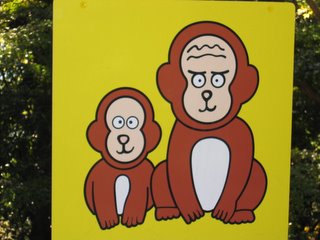The Kamakura region is little over a half hour south by train from where I'm living right now and is right on the ocean (people were surfing!). Kamakura was the capitol of Japan from 1192 until 1333 and is the nexus of emergence of the samurai, therefore there are dozens of temples, shrines and other sites to see. I went there on a field trip for my Inter-Cultural Relations class. Our final assignment for the week-long class was to plan a trip anywhere in Japan (using trains) and then execute that plan. I went with a couple from my squadron (Leif & Kristina) and their children (Lars-3 & Kara-1.5) and we had a pretty nice time. This area is a major tourist area so there were several school field trips blobing around as well as random packs of tourists such as ourselves. The brightest spot of the trip was lunch. The Kamakura area is actually pretty large so by the time we got to our first checkpoint it was already 11:00. We walked by a noodle shop that had really good looking plastic food in a case outside (in case you've never been in this area before, a good majority of the smaller eating establishments have plastic food in cases outside to represent their menu). We figured it would be good to get lunch before we really started but when we went into the restaurant we discovered they we closed. Disappointed we forged on to see the Great Budda. We figured that we'd find another place along the way that was open, but not only wasn't anything else open, all the other plastic food didn't look that good! So we pressed on, saw the Great Budda and the Hase Kannon Temple and headed back towards the train station. When we went back by the restaurant with the good plastic food it was open so we went in. The people who had turned us away before recognized us and were very happy that we had decided to give them another chance. Needless to say the service was great, all the Japanese ladies in the place had to fawn over the baby (she is a cutie), and the food was well worth the wait.





















































